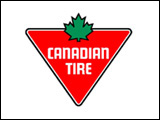Spring is about to spring and with it all the migrating birds will be coming back to breed. Many birds nest in cavities – historically holes made by woodpeckers or in rotting trees.
Unfortunately for the birds, we humans have a tidy mentality and like to cut down dead trees as well as clear-cut the forests. You have probably recently heard about a hog farmer in the Pansy area who was clearing three square miles of forest just to spread manure! Birds are territorial so where are the birds going to nest that previously nested in those three square miles? Composting is a much better way of handling hog manure anyway and it doesn’t require clear-cutting forests to do it.
You have probably also heard that over the last 40 years the number of birds has gone down by half. This is due to things like pollution, agricultural practices, global warming and habitat loss – eg for spreading hog manure. Birds need our help. One way to help is to provide suitable birdhouses, but of course birdhouses will only help those birds that nest in cavities. Although Wrens are perhaps the easiest to attract to a birdhouse, a Wren house would be far too small for most species.
The biggest mistake many people make is to put a little perch below the hole. This is totally unnecessary and in fact a very bad thing to do. Birds nest in cavities for protection and to get away from predators. Blue Jays may be pretty but they eat eggs and baby birds that they take from other small birds’ nests. Putting a perch by the hole of a birdhouse gives a Blue Jay a convenient place to stand while it puts its head through the hole and gets the eggs or babies. So if you have a birdhouse with a perch, cut it off. There aren’t convenient perches outside old woodpecker holes and birds get in and out without difficulty.
Chickadees are common birdhouse nesters and if you live in an open area you can often attract Bluebirds and Tree Swallows to birdhouses placed on fence posts. If you have water close by or a dugout you might attract a Wood Duck or Merganser. A real treat would be an Owl or a Kestrel, both of which eat mice, beetles and other small prey.
Obviously you would not expect a Wood Duck to nest in a Wren house, nor a Wren to nest in a Wood Duck house. The size of the birdhouse, the size of the hole and the height above ground are all important factors in success. No perches of course: hopefully you are convinced of that. Any old wood will do, such as old fence panels or old plywood. Dimensions can be found in many bird books. It is best to clean out old nests in fall so it helps to have a couple of screws on one side for quick removal.
And finally, birdhouses are best put out in early spring so that migrating birds can find them when they are looking for a nesting site.



